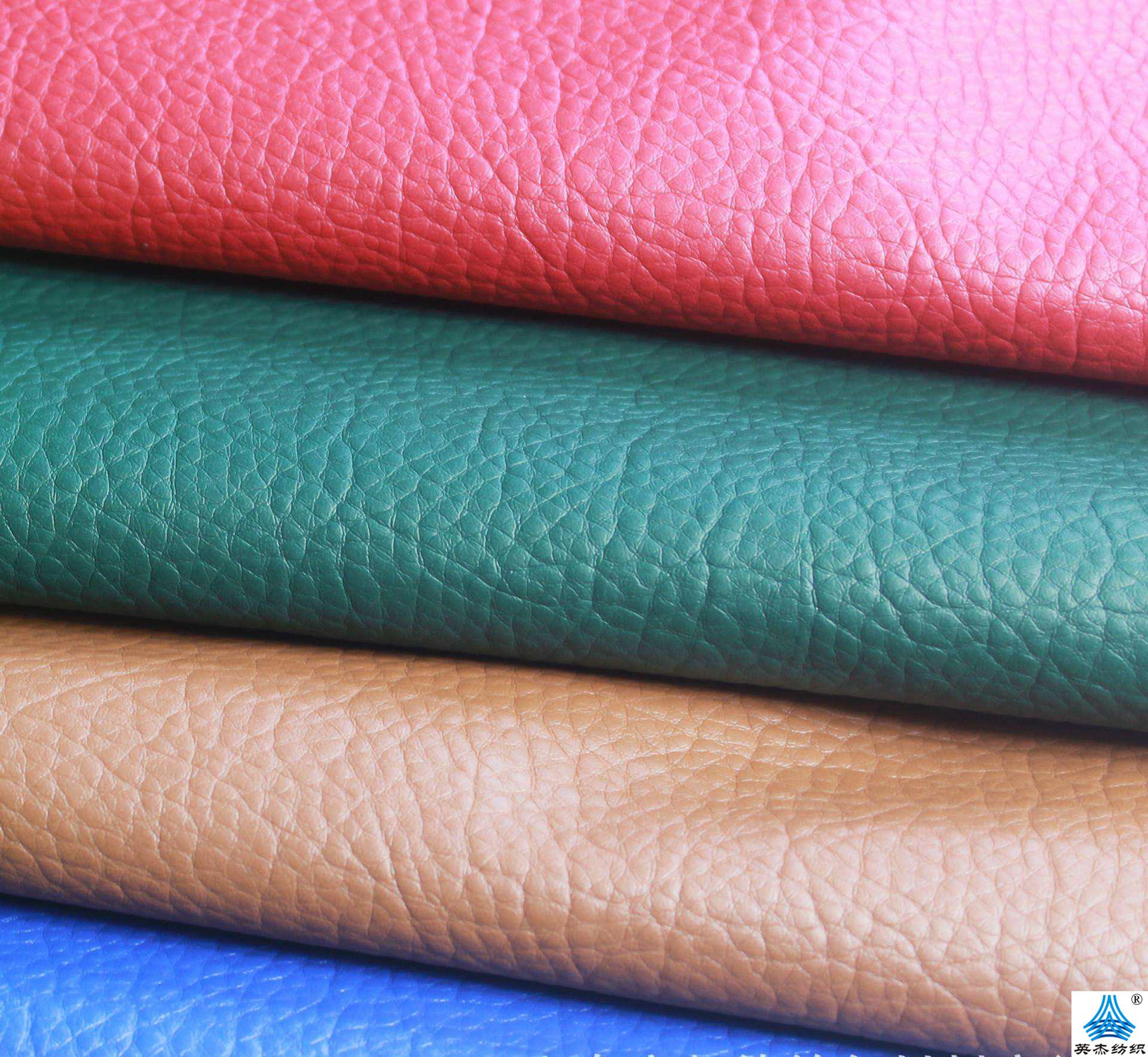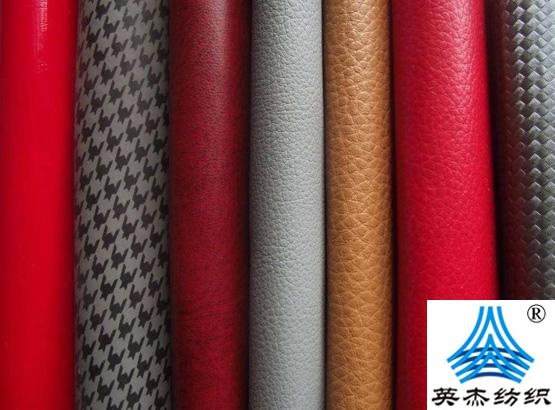Artificial leather dry process
Artificial leather dry process
Polyurethane artificial leather is mainly divided into dry polyurethane artificial leather and wet polyurethane artificial leather. The so-called dry polyurethane artificial leather refers to a multi-layer structure composed of a multi-layer film and a base fabric after the solvent in the solvent-based polyurethane resin has been evaporated. Wet-process polyurethane artificial leather is a multi-layer structure obtained by using solvent-based polyurethane to form a film in water, which has air permeability and moisture permeability, and also has a continuous porous layer.

1. Dry-process polyurethane artificial leather
(1) Production process
Note: 1. Release paper delivery 2. Release paper storage device 3. Coating table 4, 10M or so drying box 5. 6 sets of cooling rollers, 2nd coating table 7. 15-20M drying box 8. 2nd set of cooling boxes 9. The third coating station 10, the base fabric sending station 11, the laminating device 12, the 20-25M drying box 13, the third set of cooling rollers 14, the peeling device 15, the artificial leather take-up 16, the release paper take-up
The production principle of polyurethane artificial leather using the release paper method is to apply surface and bottom layer mixing liquids with different properties on the release paper using a scraper. After the fabric is dried and cooled, the base material of the adhesive layer is coated, and the base fabric is used for delivery. The laminating device composites the base material and base material. After drying and cooling, the peeling device is used to separate the finished artificial leather and release paper into rolls.
(2) Main raw materials
1. Release paper
A. Release paper classification:
Classified by use: ① Paper for polyvinyl chloride artificial leather ② Paper for polyurethane artificial leather
According to pattern: ①Flat paper ②Embossed paper
According to glossiness: ① high gloss type ② bright type ③ semi-bright type ④ semi-matt type ⑤ matt type ⑥ super matt type
According to material: ① Silicone paper (surface coated with silicone polymer, temperature resistance ≤ 190℃) ② Non-silicon paper (surface coated with propylene polymer, temperature resistance ≤ 150℃) ③ Special paper (for PVC)
B. Performance requirements:
①Strength: Since after coating, it enters the oven for drying and the temperature is relatively high, it must have sufficient strength during multiple uses, including important tear strength.
② Surface uniformity: A certain release uniformity and gloss must be maintained, and the smoothness and thickness of the flat paper must be consistent.
③Solvent resistance: In production, a variety of solvents are commonly used, and it must neither dissolve nor swell.
④Appropriate peel strength: The release paper must have appropriate peel strength. If the peeling is too difficult, it will affect the number of times the paper can be reused. If the peeling is too easy, it will easily cause pre-peeling during coating and lamination, which will affect product quality.
C. Supplier:
At present, there is no production of release paper in China, and it mainly relies on imports. The main manufacturers of release paper are: American Volon Company, British Wiggins Company, Italian Binda Company, Japanese Soken Co., Ltd., Asahi Roll Co., Ltd., Dai Nippon Printing Co., Ltd., etc. The leading product varieties of each company are different.
2. Resin
One type is resin for the skin layer, and the other type is resin for the adhesive layer. The latter can be divided into I liquid type resin and II liquid type resin. Generally speaking, I liquid polyurethane is manufactured from high molecular weight compounds containing active hydrogen, low molecular weight compounds containing active hydrogen (also known as chain extenders) and diisocyanate compounds. Its molecular structure can be divided into two parts. One is based on high molecular weight compounds containing active hydrogen, which is called the soft chain part. The second is called the hard chain part which contains low molecular weight compounds and diisocyanate. The proportion of hard chain links is beneficial to increase its melting point, glass transition temperature, hardness and strength, but relatively reduces its elasticity and solubility.
On the contrary, high molecular weight compounds containing active hydrogen are softer links, which can lower their melting point, glass transition temperature, and improve softness, elasticity and flexibility. The structure of polyurethane resin has a great influence on its performance. Its performance depends on the size of the molecular weight, the attraction between molecules, and the flexibility of the links between molecules. The properties of polyurethane resin increase with the increase of molecular weight, such as tensile strength, Elongation, melting point, hardness, etc., solubility, on the contrary, decreases as the molecular weight increases. Generally, dry-processed leather requires that the surface treatment layer be smooth and wear-resistant, have good bending resistance, good solvent resistance, good re-coatability, uniform pigment dispersion, good color development and other characteristics.
Therefore, I-liquid type resin with high cohesive force is suitable. In addition, the porous layer of wet polyurethane leather requires rapid solidification in water, so thermoplastic I-liquid resin with high intramolecular cohesion is also used. The adhesive layer requires good adhesion to the base fabric, softness, and good hydrolysis resistance, so it is best to use a thermosetting II liquid that has low cohesion and is used together with cross-linking agents such as isocyanate in the presence of a cross-linking accelerator. Type II liquid polyurethane resin, II liquid type resin is obtained by the addition polymerization reaction of high molecular weight compounds containing active hydrogen and diisocyanate. It has reactive hydroxyl groups on its ends. II liquid type polyurethane resin itself cannot form a film, even if it forms a film It is also a film with low physical properties. In order to improve its physical properties and adhesion, the terminal reacted hydroxyl group and cross-linking agent can be used to perform a cross-linking reaction through a cross-linking accelerator to form a network structure to obtain a film with high physical properties.
The physical and chemical properties of the film are determined by the active hydrogen-containing compounds in the II liquid polyurethane resin., Good migration resistance, it is required that the colorant will not migrate in the resin and the pigment will not precipitate.
E. Good chemical resistance and stability, good acid and alkali resistance, and no chemical reaction with other additives in the resin.
F. Non-toxic, odorless, and the colorant does not contain impurities that affect the resin.
(3) Formula process design
The main raw material used in polyurethane artificial leather is polyurethane resin. When selecting it, based on the appearance, hardness, color, gloss and physical and mechanical properties of the sample provided by the user, first do a small sample test to understand the properties of the cortex mixture and the adhesive layer mixture. Cooperate and explore the process conditions before putting them into use.
In the production process of polyurethane artificial leather, the resin slurry goes through a series of processes, and then the solvent is completely evaporated, which leads to the problem of reasonable production process. The comprehensive viscosity of the compounding liquid should be controlled according to the size and depth of the texture to be processed. If the viscosity is too low, It is easy to cause unclear surface patterns and adhesion, and the cost is relatively increased. When the viscosity is high and the coating amount is reduced, it is easy for the mixed liquid to enter the release paper pattern, the coating gap is small, and the phenomenon of knife jamming and paper breakage may cause inconvenience to the operator.
In terms of product process design, the design should be based on the use of the product. For example, shoe leather requires high mechanical strength. When selecting the base fabric, fleece fabric and plain fabric with higher physical properties should be used. If the customer requires the surface of the shoe leather to be flat and smooth, the release paper should be selected with small patterns. , relatively bright or high-gloss type, the polyurethane resin skin layer should be a higher modulus model, and the adhesive layer should consider hydrolysis resistance, and the color of the base fabric and the color of the skin layer should be coordinated and close.

(4) Troubleshooting of abnormalities in production
Solutions to the causes of serial number defects
Pinholes occur on the 1 side. Solvents with low boiling points and solvents with high boiling points
The viscosity of the surface layer is too high and the coating is too thick. Apply thinner
The higher the oven temperature, the shorter the drying time for the surface layer. Lower the oven temperature
The surface layer resin is dissolved to reduce the viscosity of the surface layer mixture and extend the drying time. Use solvent-resistant resin and use less strong solvents for the adhesive layer
2 Pinholes occur after laminating the base fabric
The oven temperature is too low after bonding
Large coating volume
Small fitting gap
The fitting pressure is too high
The oven temperature is low after lamination
Small air volume
Poor cooling after drying of the surface layer
There is too much DMF in the adhesive layer and the slow drying speed increases the viscosity of the adhesive layer
Reduce coating volume
Increase the laminating roller gap
Reduce fitting pressure
Properly increase the temperature of the second oven
Increase air volume
Let the topping cool completely
Use less DMF and use toluene and ethyl acetate
Pinholes occurred after surface treatment. Insufficient curing
The surface layer is too thin and uneven
The raised cloth is uneven
The surface treatment agent is too solventy and the coating amount is large and fully mature
Increase the thickness of the surface layer and apply it evenly
Use evenly raised cloth
Use less strong solvent DMF and reduce coating amount
4. The scraper lines are produced and the blade of the scraper is defective
The viscosity of the surface layer is too high
The blade radius of the coating scraper is small
Foreign matter is mixed into the slurry
If the release paper is defective, repair or replace the scraper
Reduce surface layer viscosity
Dark large blade radius
Filter before scraping
Replaced release paper
Solutions to the causes of serial number defects
5. Pengrun phenomenon. Mold releasability of release paper
The resin itself swells easily
The coating amount of the skin layer is small
Uneven coating
The resin of the adhesive layer is different
Different solvents
The amount of adhesive layer applied is too large
Use heavier release paper if the drying time is too long
Use non-swelling resin
Apply the skin thicker
Apply evenly
Use non-swelling resin
Choose solvents that are not easy to swell, such as DMF and toluene
Apply less adhesive layer
Increase vehicle speed
Mold release properties of 6-sided concave release paper
The resin used in the skin layer has poor solvent resistance
The dent after surface treatment is due to the excessive amount of DMF in the surface treatment agent and sufficient drying and ripening after lamination
The skin layer is made of solvent-resistant resin, and the adhesive layer uses less strong solvents
Use less DMF as a surface treatment agent and use soluble alcohols instead
7. There is a problem with the release paper due to shrinkage cavities
Coating too thin
If the slurry viscosity is too low, use other release paper
Coating thickening
Increase slurry viscosity
8. Resin that feels hard or has wrinkles is a hard grade
The amount of coating is too thick
The base fabric is hard
The adhesive layer cross-linking agent mostly uses soft grade resin
Apply thinner
Choose soft base fabric
Adjust cross-linking agent dosage PkRK9FzTxR
Disclaimer:
Disclaimer: Some of the texts, pictures, audios, and videos of some articles published on this site are from the Internet and do not represent the views of this site. The copyrights belong to the original authors. If you find that the information reproduced on this website infringes upon your rights, please contact us and we will change or delete it as soon as possible.
AA






